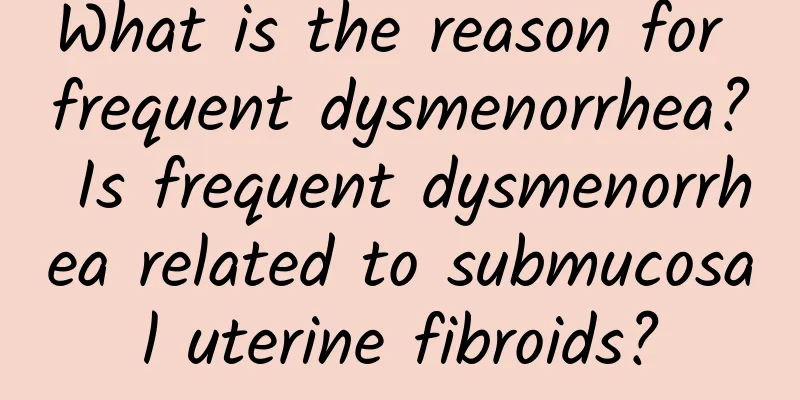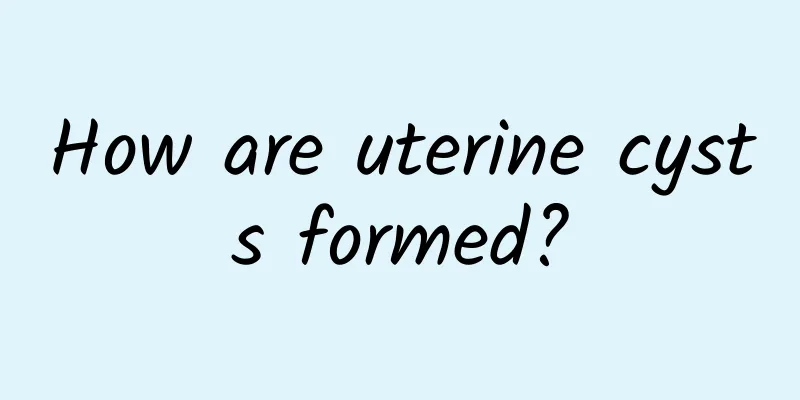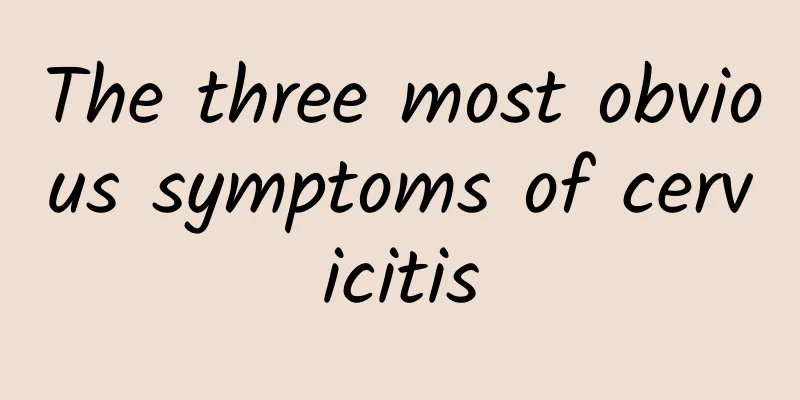What is the reason for frequent dysmenorrhea? Is frequent dysmenorrhea related to submucosal uterine fibroids?

|
Dysmenorrhea refers to lower abdominal or back pain, or even lumbar pain, during and before and after menstruation. Whenever it occurs during the menstrual cycle, severe cases may be accompanied by nausea and vomiting, cold sweats, hand and foot cramps, and even fainting, affecting work and life. Characteristics of dysmenorrhea caused by submucosal uterine fibroids: compression pain Submucosal fibroids are a type of uterine fibroid that suddenly grows in the uterine cavity. As the surface of the fibroids covers the endometrium, the endometrium increases in area, occupies the uterine cavity, and affects the discharge of menstrual blood, it can cause abnormal uterine contraction, dysmenorrhea, and is accompanied by heavy menstrual flow and irregular periods. As the fibroids develop into the uterine cavity, the adjacent organs will experience compression symptoms. When the fibroids become red or the pedicles of the subserosal fibroids twist, severe abdominal pain may occur. One-third of patients may be accompanied by infertility. Uterine fibroids are benign tumors, and the occurrence of uterine fibroids is generally believed to be related to estrogen and progesterone. In addition, it may be related to other factors, but it is not clear. Strategies 1. Drug treatment. Take drugs as prescribed by the doctor to inhibit the growth of fibroids and make them shrink gradually, such as mifepristone. 2. Surgical treatment. Myomectomy: Submucosal myomas can be removed through the abdomen, preserving the uterus; pedunculated submucosal myomas can be cut through the vagina, and the stumps can be sutured. Total hysterectomy: If the fibroids are gestating in the uterus for more than 3 months; or if the symptoms are severe and non-surgical treatment is ineffective; or if there is suspected malignant change, a total hysterectomy should be performed. |
>>: What are uterine leiomyoma and what are the symptoms of uterine leiomyoma
Recommend
What should you pay attention to when you have habitual miscarriage? There are 4 aspects
Nowadays, women are under pressure from many aspe...
Eating lunch at 3 p.m. reduces calorie consumption by 40%
Whether you will lose weight or not, it is not on...
What are the changes of uterine fibroids in a week? How long does it take for uterine fibroids to grow one centimeter?
What are the changes of uterine fibroids in a wee...
What is the best way to treat cervical erosion?
Recently, many netizens have asked how to treat c...
How to treat intramural uterine fibroids? Is intramural uterine fibroids a benign tumor?
In recent years, due to the interaction of variou...
What health care should you pay attention to after menopause
Many women in life are familiar with menopause. M...
What are the effective methods to prevent cervical erosion? Six methods to prevent cervical erosion are introduced
When a woman develops chronic cervicitis, because...
Acute and chronic cervicitis usually manifests as leucorrhea
Acute and chronic cervicitis usually manifests as...
Can pelvic inflammatory disease cause miscarriage? It is possible
No matter what kind of disease it is, you should ...
Understanding the cause of amenorrhea is more helpful for diagnosis
When a woman has regular menstruation but has not...
Do you know about the related issues of vaginitis infection?
Vaginitis is one of the common gynecological dise...
The main causes of cervicitis
Cervicitis is a common gynecological disease, and...
Do I need to take long-term medication for cervical precancerous lesions?
Cervical precancerous lesions are a disease that ...
What is the reason for blood in leucorrhea? Blood in leucorrhea is related to these 7 reasons
Normal leucorrhea is white or transparent. When t...
Athletes will never get fat? Research: Not necessarily
Athletes often need to engage in physical activit...









